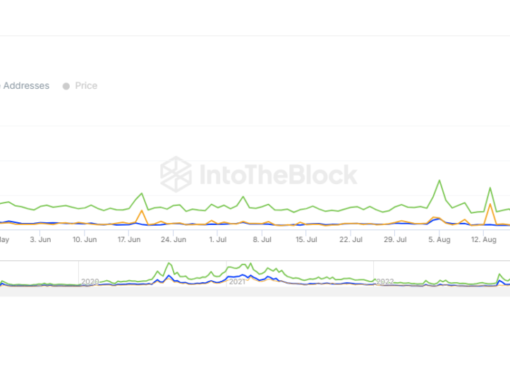The IMF has released its weakest global growth forecast in over 30 years as inflation, banking crises, and geopolitical problems bite hard.
The International Monetary Fund (IMF) recently published its most underwhelming medium-term global growth forecast in over 30 years. On Tuesday, the major United Nations (UN) financial agency expected global growth of 2.8% in 2023 and 3% in 2024. This forecast comes in slightly below what the IMF estimated in January as continued inflation and a banking crisis cause for concern.
In the forecast, the IMF predicted that global growth would be around 3% in five years. This gloomy prediction represents the lowest medium-term forecast in a World Economic Outlook since 1990.
The Fund pointed out:
“The world economy is not currently expected to return over the medium term to the rates of growth that prevailed before the pandemic.”
The Washington DC-based institution also said its baseline forecast assumes the successful containment of the “recent financial sector stresses.”
Factors Influencing the IMF Global Growth Forecast
The IMF ascribed its weaker growth prospects to the progress of economies such as China and South Korea in raising their living standards. In addition, the international financial institution also referenced stagnated global labor force growth and geopolitical skirmishes. These include Britain’s exit from the eurozone (Brexit) and Russia’s military invasion and onslaught in Ukraine.
On the grim outlook for gross domestic product (GDP) growth between now and the end of next year, the IMF offered:
“The major forces that affected the world in 2022, including central banks’ tight monetary stances to allay inflation and China’s economic reopening—seem likely to continue into 2023.”
Also citing restrictive fiscal buffers amid record-high debt levels, commodity price surges, and the Eastern European strife, the IMF added that “the anemic outlook reflects the tight policy stances needed to bring down inflation, the fallout from the recent deterioration in financial conditions, the ongoing war in Ukraine, and growing geoeconomic fragmentation”.
The IMF stressed that all previously mentioned “forces” are “now overlaid by and interacting with new financial stability concerns”.
The world-renowned intergovernmental financial institution analyzed hotspot regions by breakdowns. According to the IMF, the US economy will grow at 1.6% in 2023, with the eurozone expanding by half this rate at 0.8%. However, the Fund also predicted that the UK economy would contract by 0.3% in 2023.
Meanwhile, in East Asia, the IMF forecast China’s economy to grow by a substantial 5.2% this year, continuing a post-Covid reemergence. In Southern Asia, the intergovernmental financial agency expects India’s GDP to swell by an even more impressive 5.9%.
Despite its ongoing war in neighboring Ukraine, Russia’s economy is expected to grow 0.7% this year. This IMF forecast follows the 2% contraction the Eastern European country endured in 2022 following its February 24th invasion.
Financial Hiccups
The fiscal headwinds plaguing Western economies were underscored last month by the collapse of three US banks. These include Silicon Valley Bank (SVB), Signature Bank, and Silvergate Capital. The trio imploded after sustaining a customer bank run following fears of a recession. Since the bankruptcies, several leading banks, spearheaded by JPMorgan Chase, have stepped in to stem the contagion.
Tolu is a cryptocurrency and blockchain enthusiast based in Lagos. He likes to demystify crypto stories to the bare basics so that anyone anywhere can understand without too much background knowledge.
When he’s not neck-deep in crypto stories, Tolu enjoys music, loves to sing and is an avid movie lover.
Subscribe to our telegram channel.
Join




